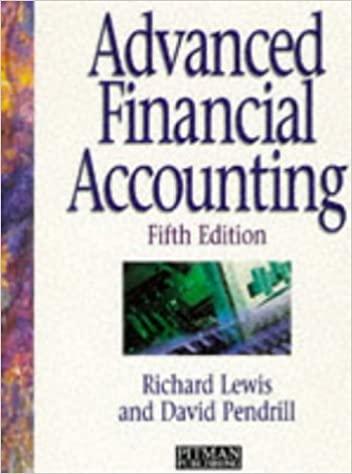Question
The entity purchased the crane in April 2015 at a cost of $2,200,000. The manager estimates that the crane will work on average for 250
The entity purchased the crane in April 2015 at a cost of $2,200,000. The manager estimates that the crane will work on average for 250 days each year for 10 years and then it would be sold at an estimated residual price of $200,000. By 30 June 2020 the crane had worked for 1,200 days.
In July 2019 the motor of the crane started to shudder and lose power. An assessment of the cranes motor resulted in repairs that were required to maintain the motor at its normal efficiency. The cost of $6,000 comprised labour of $4,000 and replacement parts of $2,000. The repairs were completed by the end of July 2019. The management decided that the cost would be regarded as a capital cost. At the same time management estimated that the crane would now be used for a total of 3,000 days with an estimated residual value of $90,000. In the remainder of the financial year to 2020 the crane worked for 200 days.
On 30 June 2020 the management assessed the crane under AASB 136 that its net fair value was $1,000,000.
1. Calculate the carrying value of the crane at 30 June 2019.
2. Explain why management is not correct in its accounting treatment of the cost of repairs. You may support your comment by reference to AASB 16.
c) Explain the effect of the managements assessment of the net fair value of the crane on 30 June 2020 by undertaking relevant calculations.
d) Prepare the section of the Statement of Financial Position to show the cranes carrying value as at 30 June 2020.
Please provide detailed answers
Step by Step Solution
There are 3 Steps involved in it
Step: 1

Get Instant Access to Expert-Tailored Solutions
See step-by-step solutions with expert insights and AI powered tools for academic success
Step: 2

Step: 3

Ace Your Homework with AI
Get the answers you need in no time with our AI-driven, step-by-step assistance
Get Started


